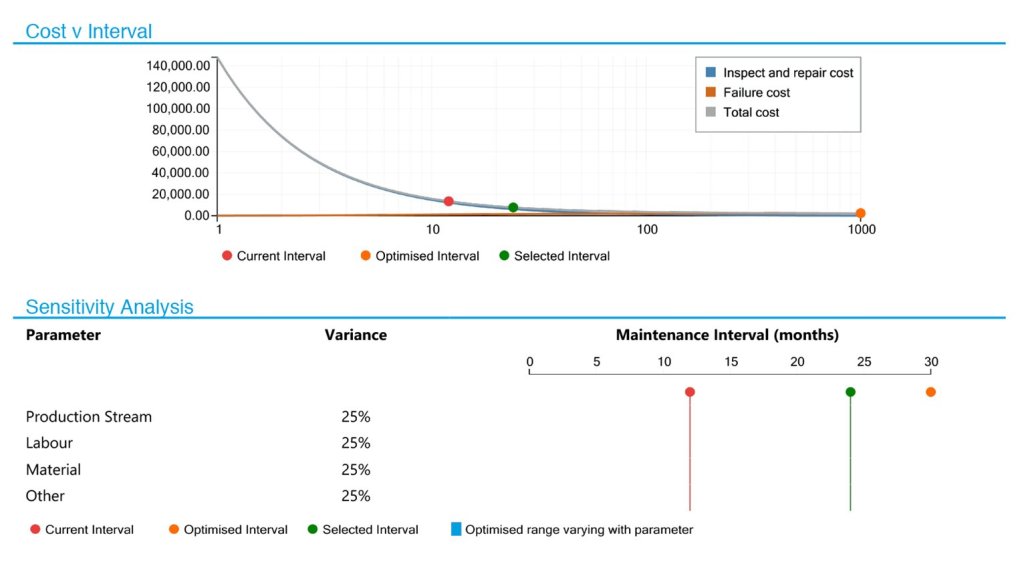
Aker BP: Using data intelligently to cut planned maintenance in half.
Optimizing the maintenance of an FPSO’s centrifugal pumps and fire and gas detectors using our maintenance optimization solution
Key Facts
01
Client
Aker bp, Norway
02
Asset
Skarv FPSO
03
Result
Reduced the annual planned maintenance hours/cost for fire and gas detectors by more than 50%. Optimized centrifugal pump maintenance, with an estimated annual saving of 400KNOK
Pullout Stats
100+
selected centrifugal pumps, 60 months of maintenance history
406,000
NOK saving
1,700+
in-service devices, 60 months of maintenance history, and reduced planned maintenance by more than 50%
Client Challenge
Aker BP is a well-established exploration and production company, with activities on the Norwegian Continental Shelf (NCS). Measured in production, our client is one of Europe’s largest independent oil companies.
As an energy leader, the company was keen to see how it could make the most of its real-time equipment data to safely reduce maintenance workloads and spending. Aker BP want to run a pilot project, with the Skarv floating production, storage and offloading (FPSO) unit it operated as the test asset. The pilot focused on two core maintenance areas: the FPSO’s centrifugal pumps and fire and gas detectors, covering a total maintenance history of 60 months. The objective was to quickly demonstrate the business benefits of our recommended approach, combining our data and engineering expertise with our AllAssets Maintenance Optimization software solution.
How We Helped
The close, collaborative approach made full use of our client’s existing data sets for the Skarv FPSO and our AllAssets Maintenance Optimization solution.
The pilot project was broken into three main stages, as follows.
- Gathering asset information from our client, including maintenance history, maintenance procedures, criticality ranking of every item of equipment under investigation, etc.
- Analyzing and reviewing the information using different strategies and methods for, each equipment or device type.
- Analyzing and reviewing the information using different strategies and methods for, each equipment or device type.
Our maintenance optimization approach brought facility-specific asset data together with industry-standard reference files stored in the software. Using our sophisticated, risk-based algorithms, and extensive engineering knowledge across reliability and maintenance optimization, we then analyzed the data to determine the most effective maintenance strategies.

Insight
The scope of work included reviewing maintenance logs and related data for over 100 selected centrifugal pumps, for 60 months of maintenance history. The pilot comprised an even spread of pumps in terms of their impact on production. At the top end of the spectrum, the cost of production loss from a faulty pump was more than 50 million NOK (Norwegian Krone). The comprehensive evaluation covered hydrocarbon, utility, seawater, firewater and jockey firewater pump mediums.
To optimize the maintenance of the FPSO’s fire and gas detectors, we reviewed data from the client’s computerized maintenance management system, alongside supporting documentation. This covered over 1,700 in-service devices of various types, representing a 60-month operational period. We set a target minimum reliability of 99.3% for all fire and gas detector types, except 99.9% for smoke detectors (in accordance with the client’s safety requirement specification).
Powerful results
The pilot project delivered almost immediate results and return on investment for Aker BP, with several major benefits.
- Full maintenance cost transparency.
- Optimized centrifugal pump maintenance, with an estimated annual saving of 400KNOK.
- Reduced the annual maintenance hours/cost for fire and gas detectors by more than 50%, by optimizing test intervals and reducing inspection activities.
- Maintenance activities refocused in key areas for improved production availability.

AllAssets™ Asset Performance Management Software
AllAssets™ consolidates over 250 years of asset risk and performance experience, helping you:
- Increase asset uptime by at least 20%
- More than halve Inspection and maintenance costs
- Reduce equipment failure by as much as 95%